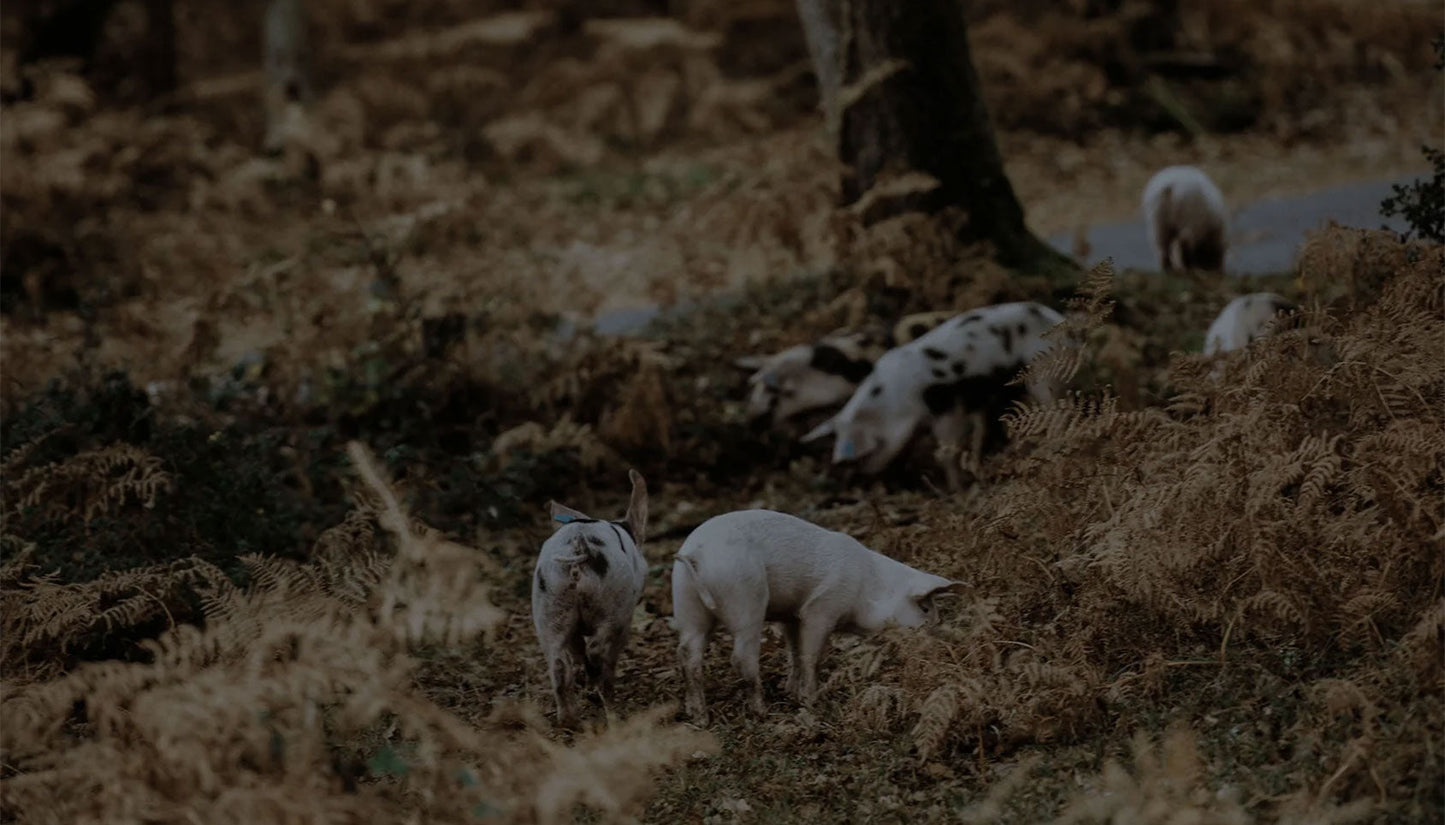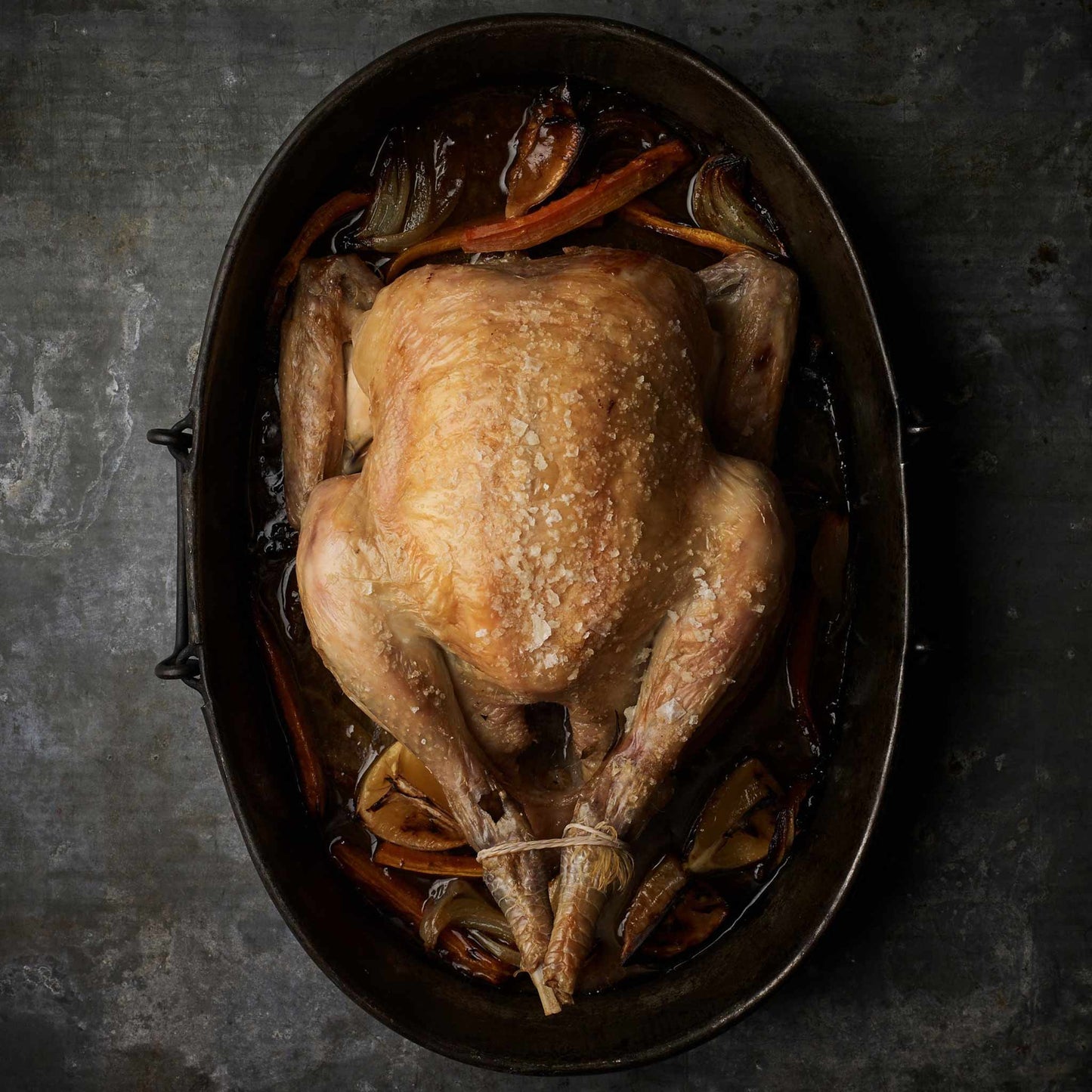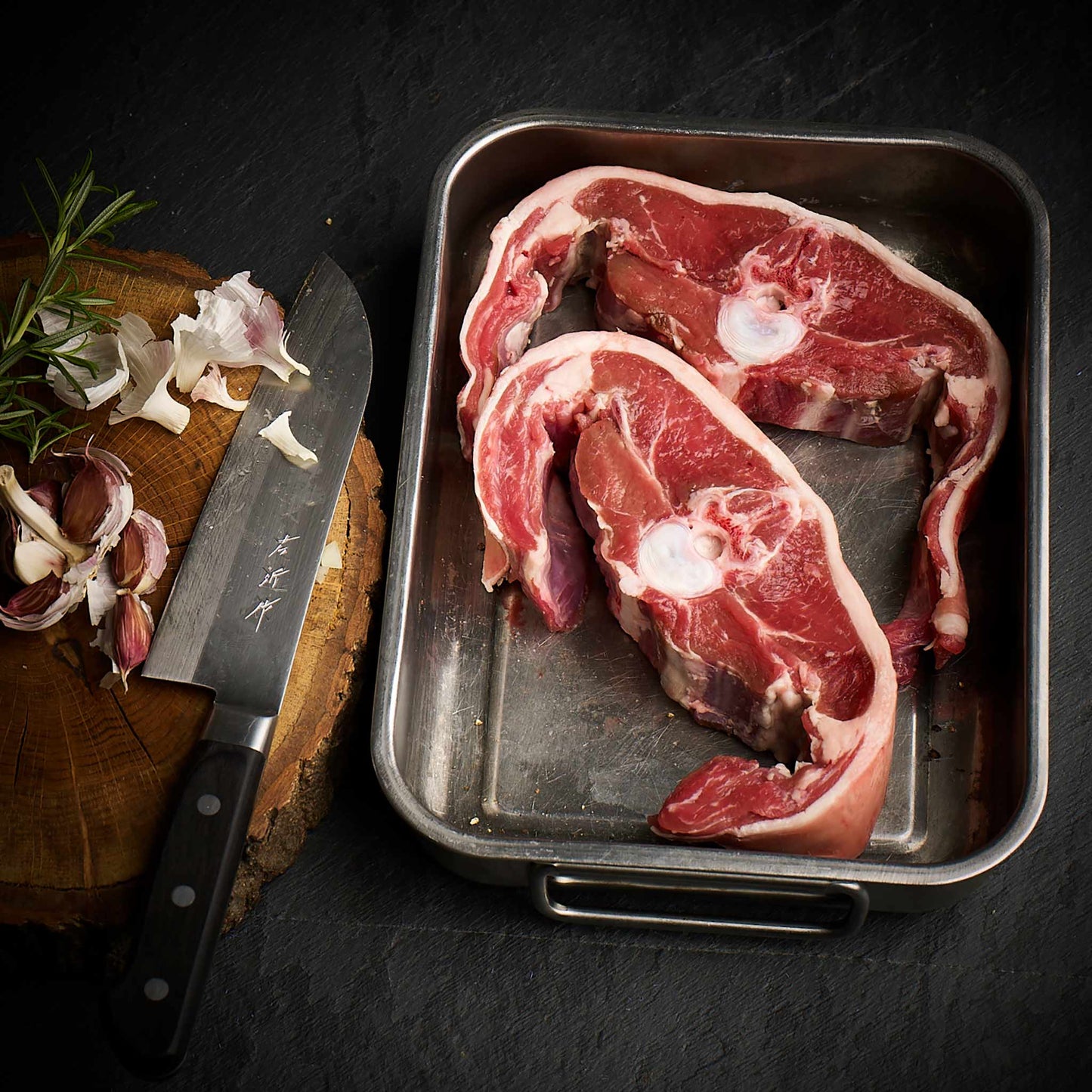We source our chicken from one farm in Leicestershire. The farm is Pasture for Life certified and rears truly free range, outdoor birds.

Can pork be regenerative?
When we think of regenerative farming systems, the focus is all too often on the grazing animals and their ability to restore soil health. But as a business we want all of our farmer partners to be operating in ways that benefit the environment. We believe that all farmed animals can, if kept properly, have two functions a. they provide us with incredible nutrition and b. be an actual benefit to the environment or landscape.
Our history with pigs
Pigs are some of the oldest domesticated animals. As we started to settle pigs offered humans a way of up-cycling kitchen and agricultural waste products into valuable fats and proteins.
Around 10,000 years ago, humans spread across the globe and pigs followed, playing a key part in the development of society. Together with cows and sheep, domestic pigs have allowed us to change from nomadic hunter-gatherers to settled farming communities.
The modern, domesticated pig can recreate the effect the Wild Boar once had on our native forests. They can improve the biodiversity of woodland, especially where a few species of plant or tree have come to dominate, and they can help eradicate invasive species. The modern options for this type of management involve herbicides, chemicals, and/or fossil fuel-powered machines.
When pigs are given access to woodland they clear the ground layer - removing plants such as nettles, brambles, bracken, willow and couch grass. They eat small tree saplings, reducing the number of non-native or unwanted tree species. They can also clear fallen seeds, such as acorns, which can be toxic to horses and cattle.
Our pork suppliers
Some forward-thinking farmers have realised the benefit pigs bring to ancient, unmanaged, mixed woodland.
On Fowlescombe Farm pigs have been used to reduce the density of the woodland ground layer, whilst also causing soil disturbance, which promotes natural regeneration by creating seedbeds. The natural foraging behaviour of the pigs result in them burying some tree seeds amongst the many they eat. These buried seeds have increased chances of survival and germination compared to those left on the surface.
Pigs as conservation tools
Elsewhere they are used for bracken management as they happily eat bracken and the rhizomes without being poisoned by the various toxins and carcinogens.
Rhododendron ponticum was first brought to Britain, probably from Spain or Portugal around 1763 for botanical gardens and used on big estates as cover for game birds. But the shrub is now out of control damaging many native woodlands and heaths.
Pigs are a very useful conservation tool in the management of Rhododendron. They can support management by improving access to the woodland floor so silvicultural operations can commence. While the pigs won’t eradicate Rhododendron, they are an excellent alternative to herbicides and mechanical operations and can be an integral part of a Rhododendron management plan.
On mixed farms, the practice of incorporating livestock into arable rotation gives the land a worthwhile break in production. A recuperation from continual crop growing - which is known to deplete nutrients and compromise soil health.
When pigs are part of the mix, arable producers have an opportunity to improve soil structure, reduce weed burden and disease carry over, increase retention of valuable nutrients and boost biodiversity – factors that can benefit subsequent crop yields.
In recent years, landowners have sought to improve the environmental sustainability of crop production. Having pigs as tenants not only offers stable rental revenue, it might also help future proof arable businesses and enable them to adhere to Defra’s more harmonious and holistic agricultural policy.
So pigs are incredibly useful to us when kept properly and in natural systems.
As mentioned, pigs would have fulfilled many roles on a small farm or homestead: clearing undergrowth, up-cycling food and agricultural wastes such as spent grains from brewing, whey from cheese making, vegetable peelings, spoiled fruits and veg and even table scraps from the kitchen.
These waste products would, over the course of the year, be up-cycled into highly valued protein and of course lard and fats used in cooking.
Pigs are amazing animals. We really do need regenerative pork!
View the Ethical Butcher pork collection HERE



